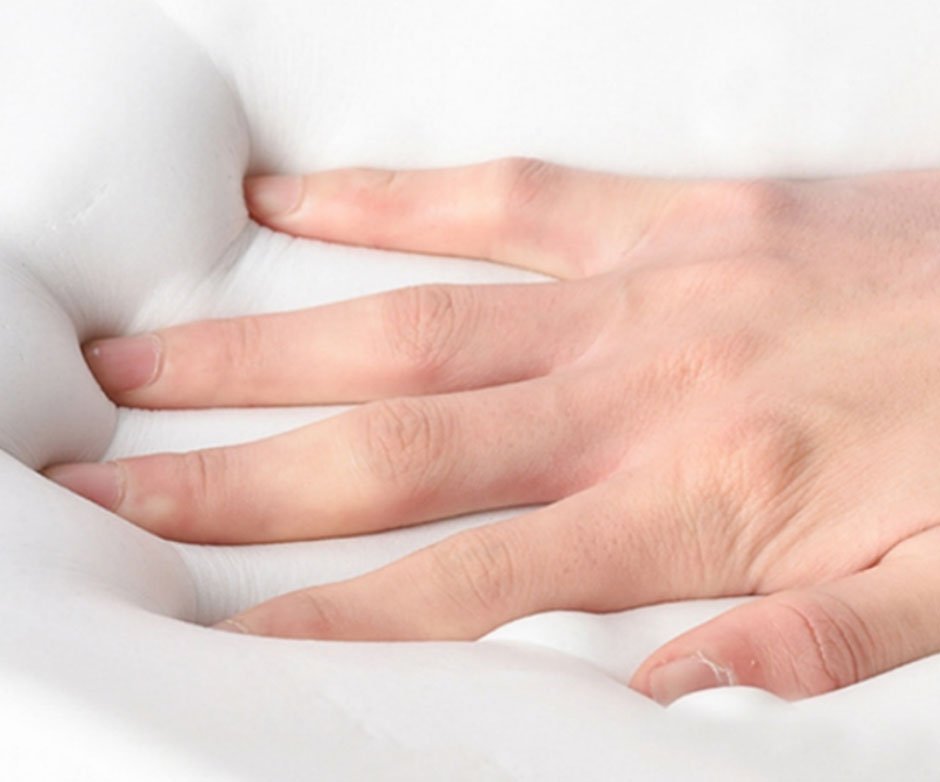Sometimes on weekends, you might want to sleep like there’s no tomorrow, but the longer you lie there, the more exhausted and uncomfortable you feel? Do you wake up with back and muscle pain? Do you wonder if you sleepwalked 5 kilometers or if someone beat you up during the night?
Sleep should be restorative and healing for the body, so why do many people feel worse after waking up? — Your sleeping position might be the problem.
Sleeping on Your Back: The Most Recommended Position
When lying on your back, your spine experiences the least pressure. Additionally, the muscles and joints throughout your body are more likely to remain in a neutral position, making it easier for the body to relax and recover. This is the most spine-friendly sleeping position.
However, there are still some issues to watch out for.
Potential Problems with Back Sleeping
1. Your Pillow Should Neither Be Too High nor Too Low
A pillow that’s too high causes your neck to bend forward — similar to looking down at your smartphone. The soft tissues in your neck and upper back are stretched for extended periods, leading to neck and back pain. It’s like bending your fingers backward for a long time — you might not feel discomfort initially, but eventually, your fingers will start hurting.
Similarly, a pillow that’s too low doesn’t provide adequate neck support. The neck muscles can’t fully relax, which can lead to cervical spine discomfort.
2. Avoid Sleeping with Bent Legs
Many people like to sleep with one leg bent. Maintaining this position for long periods overstretches the muscles on the front and inner side of the hip joint. This also causes pelvic rotation, which affects the lumbar spine and can cause back and hip pain.
The Correct Back Sleeping Position
The pillow height should neither be too high nor too low. The pillow needs to support the entire cervical spine from behind to allow optimal relaxation. The recommended pillow height: When compressed, it should be about the height of your fist or slightly higher.
Many people have too large a gap between their back and the mattress when lying on their back, preventing the back from relaxing. It’s recommended to place a pillow under your thighs or knees. The slight hip and knee bend allows the lumbar spine to rest more comfortably on the mattress, helping the back relax.
Side Sleeping: Use Pillows Wisely
Side sleeping is also a popular position, but many people don’t do it correctly.
Potential Problems with Side Sleeping

Similar to back sleeping, a pillow that’s too high forces the head upward, causing the cervical spine to bend upward. Conversely, a pillow that’s too low causes the head and cervical spine to bend downward. In both cases, the cervical spine tissue is stretched on one side and compressed on the other, creating an imbalance. Symptoms usually occur on the stretched side, similar to a rubber band developing small tears when constantly stretched.
Additionally, many people like to drape their upper leg forward across their body. If you have a partner — congratulations! Your leg can rest on them, keeping your pelvis relatively neutral. Without this support, your leg will likely rotate your pelvis and lower back forward — like twisting your spine into a pretzel. Maintaining this position for long periods overstretches the tissues on both sides of your back, leading to back, lower back, and even hip pain.
The Correct Side Sleeping Position
For most people, there’s no significant difference between sleeping on the left or right side. For late-term pregnant women, left-side sleeping is primarily recommended.
When side sleeping, the pillow should fully support your cervical spine and head, keeping the cervical spine parallel to the floor. A pillow can be placed in front of your chest to properly support your upper and lower arms and keep the shoulder joint perpendicular to the mattress. This prevents the shoulder from sliding forward and excessive thoracic spine rotation. A pillow can also be placed between your legs to prevent overstretching of the upper hip joint and keep your pelvis and lumbar spine in a neutral position, protecting your back tissues.

Stomach Sleeping: The Least Recommended Position
When sleeping on your stomach, you must turn your head to the side to breathe, putting enormous pressure on the cervical spine on the side your face is turned toward.
Try this yourself: While sitting, turn your head maximally to one side and look backward — you’ll feel the enormous pressure on that side of your cervical spine. If you sleep in this position for extended periods, this area of the cervical spine is constantly stressed, which can easily lead to significant pain. This can develop into cervical spine problems and cause numbness in your arms.
Moreover, stomach sleeping restricts chest and abdominal movement. Test it: Sit down and feel your chest and abdomen move while breathing. When lying on your stomach, your chest and abdomen are blocked by the mattress, restricting your breathing.
This restriction affects not only your current sleep, where reduced breathing efficiency decreases your body’s nighttime recovery, but also affects your daytime breathing efficiency, where shoulder elevator muscles must overcompensate, leading to neck and shoulder discomfort.
As with side sleeping, stomach sleepers usually place one leg to the side, which also causes pelvic and lumbar spine rotation, potentially causing back and hip joint discomfort.
Besides sleeping position, mattress firmness is another important factor affecting sleep.

A mattress that’s too firm can cause uncomfortable pressure on bones, especially for slender people sleeping on their side, where significant pressure is placed on the pelvis. This can cause pain or injury to the affected soft tissues.
A mattress that’s too soft, especially for people with weak muscles, doesn’t provide adequate spinal support. The back muscles must remain constantly contracted and can’t properly relax, leading to feeling even more exhausted after sleeping.
For pregnant women: During the first and second trimesters, back and side sleeping are suitable; during the last trimester, left-side sleeping is recommended. In the last trimester, back-lying should not exceed 5 minutes at a time. Additionally, when side sleeping, a thin blanket can be placed under the belly to reduce the feeling of downward pull.
While sleeping position is important, once asleep, many people find it difficult to maintain one position. Finding the right pillow and mattress is also very important. Additionally, maintaining a healthy sleep schedule, good muscle strength, and maintaining muscle and fascia activity can significantly improve sleep quality and reduce morning discomfort.








